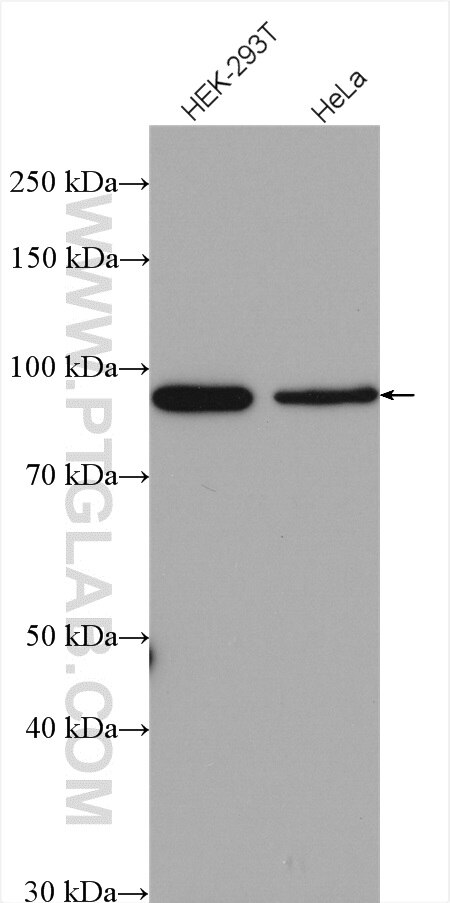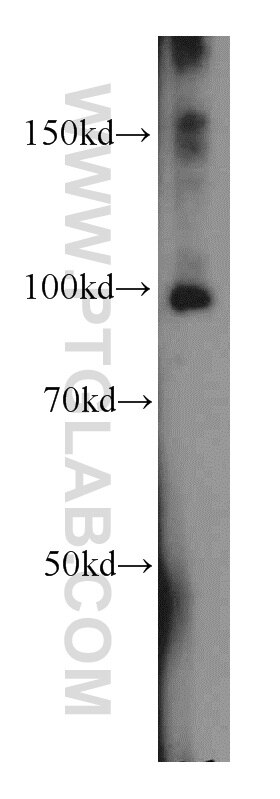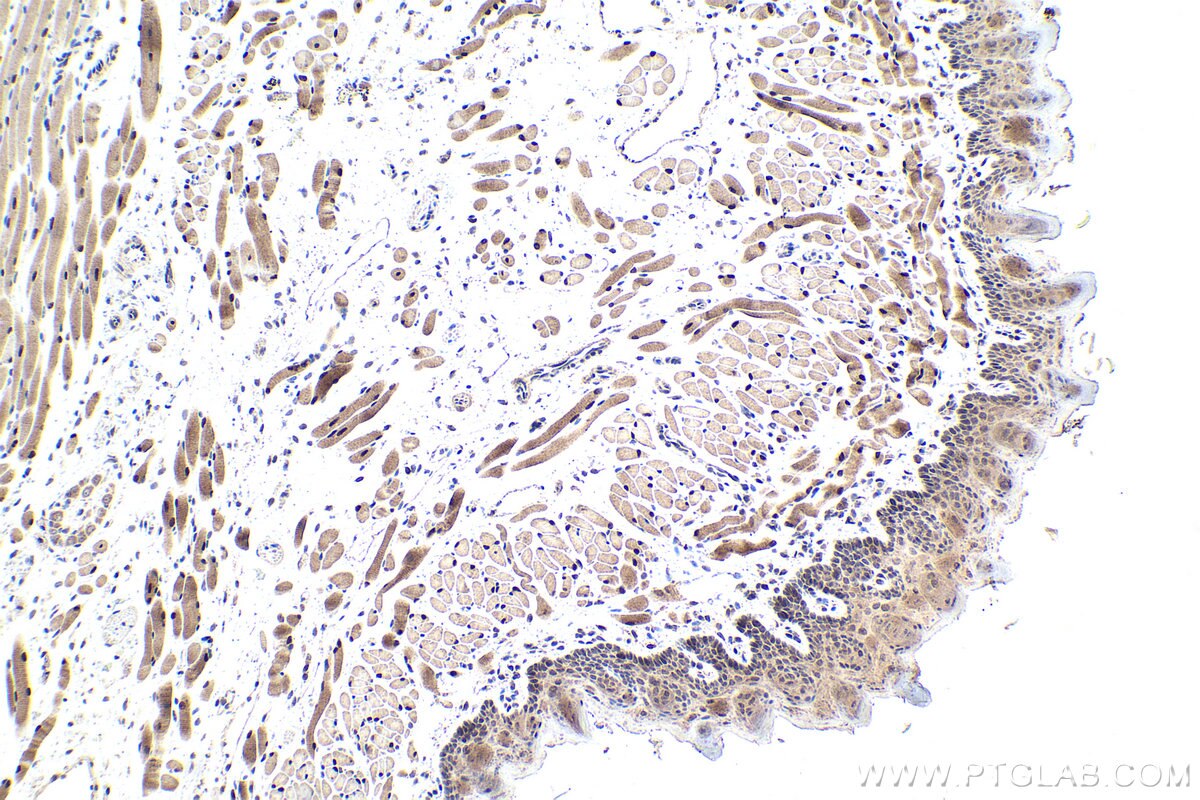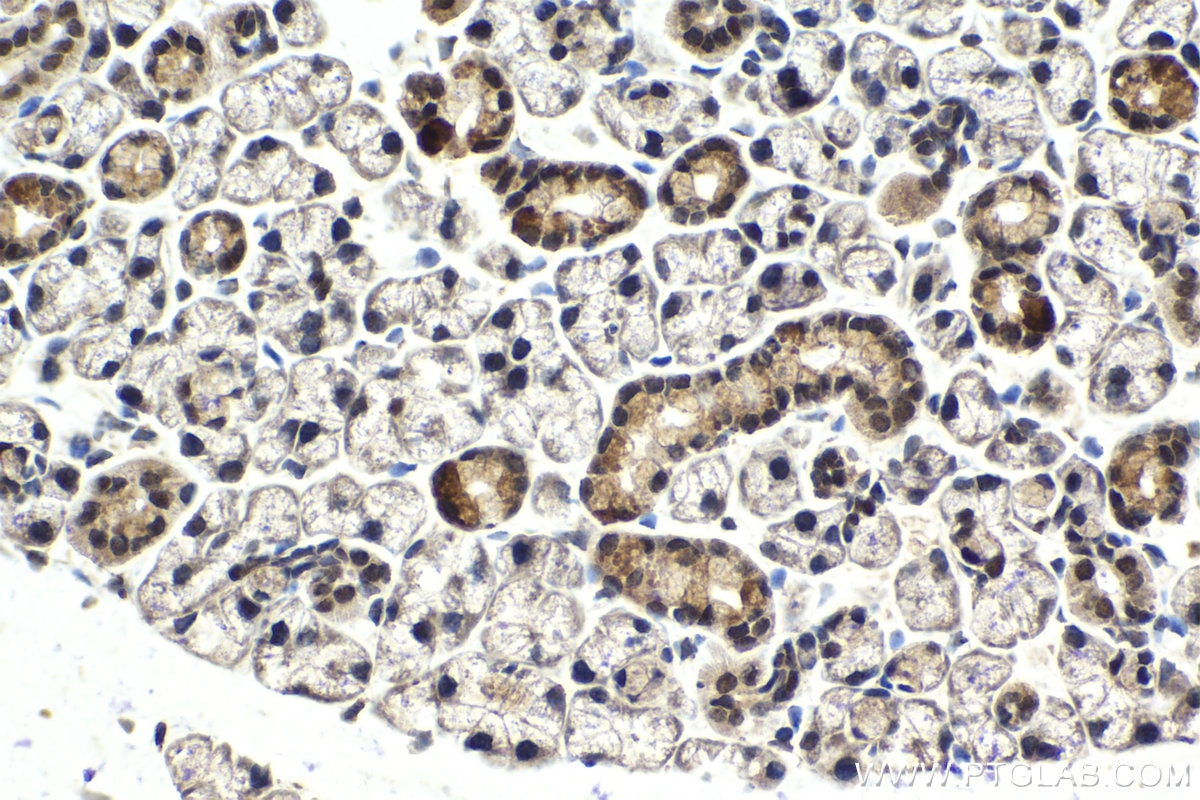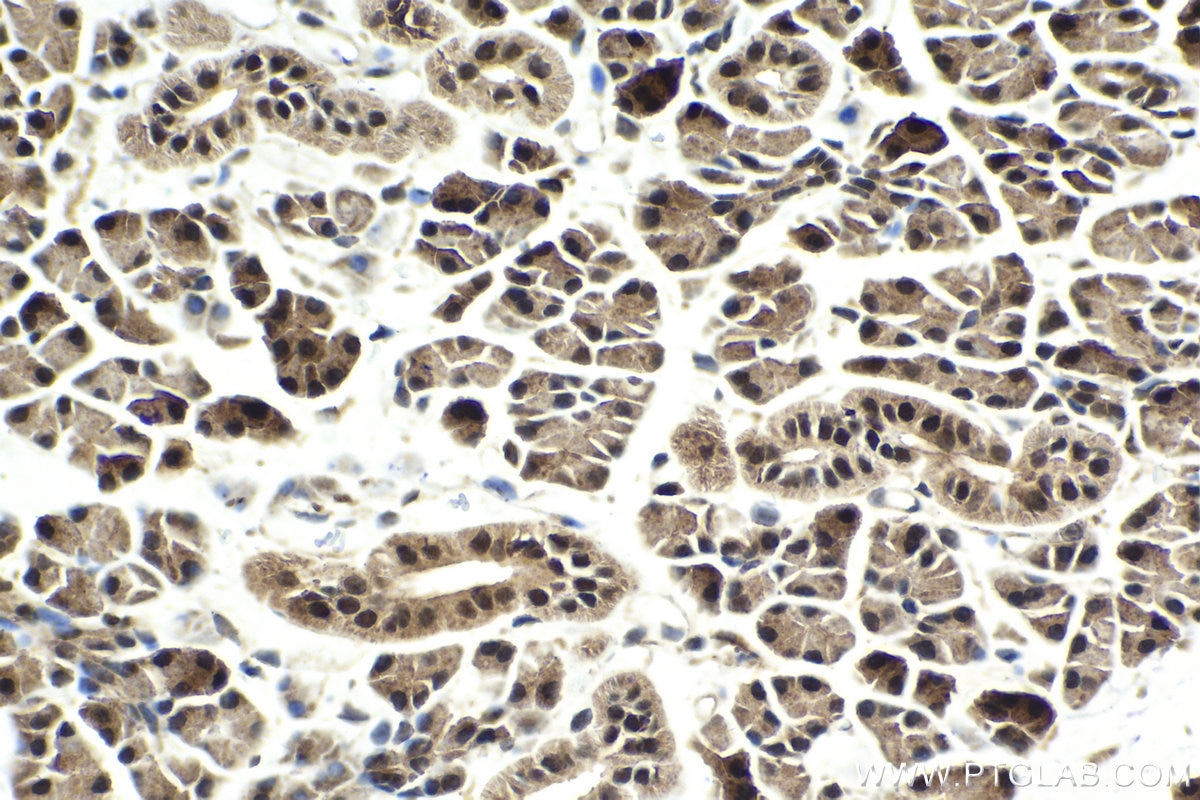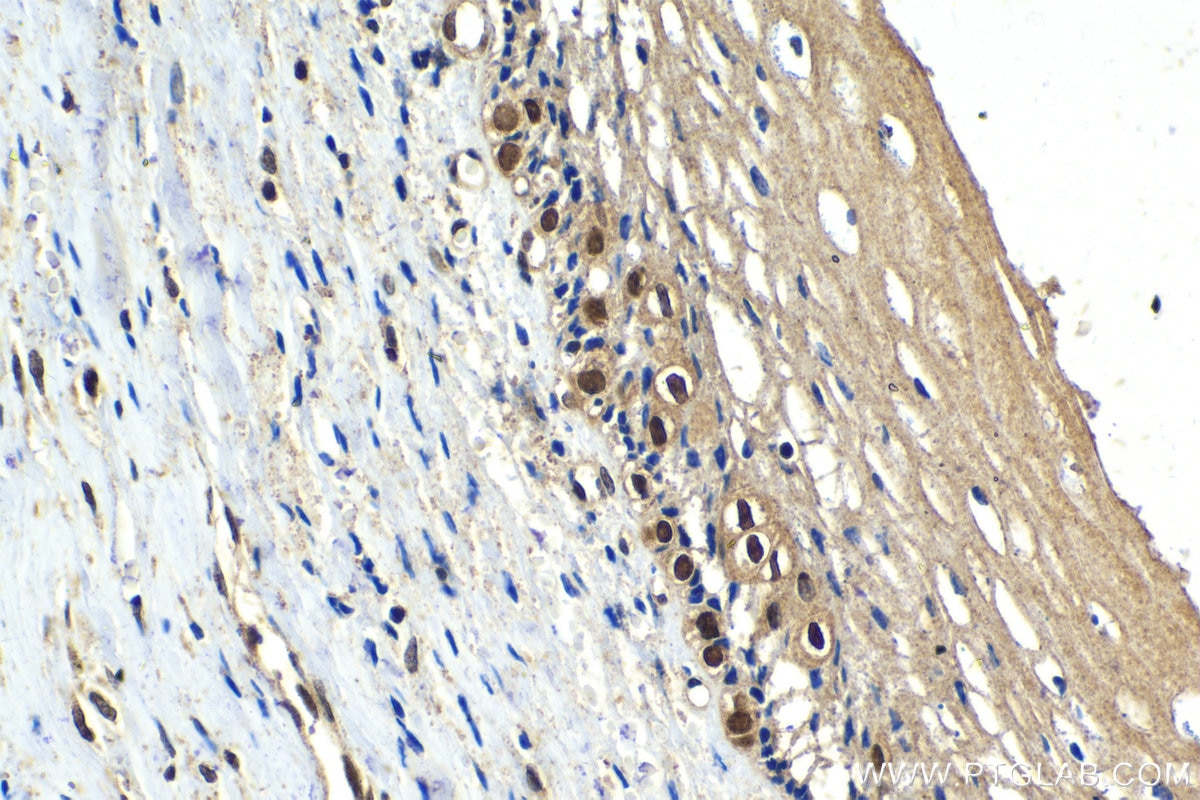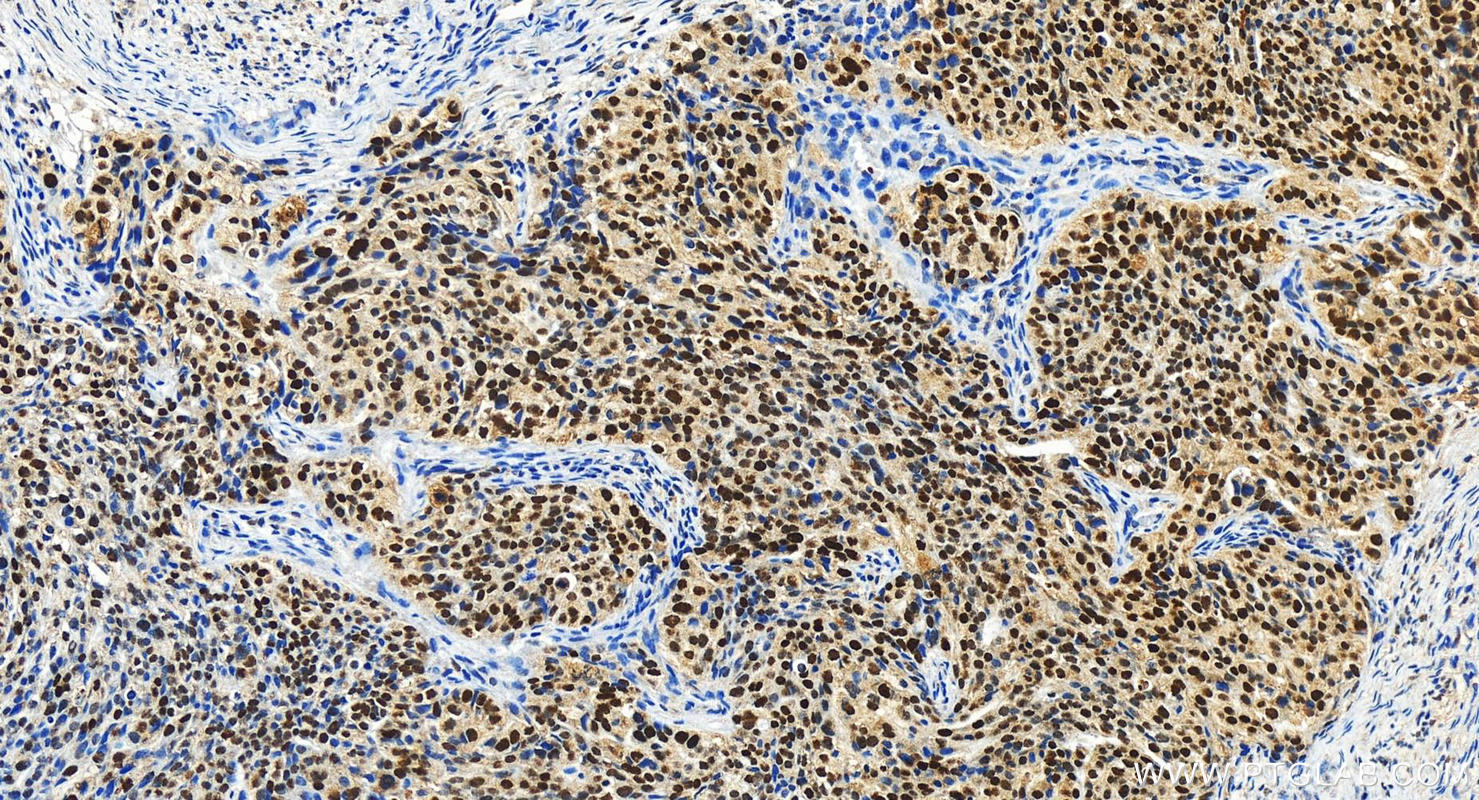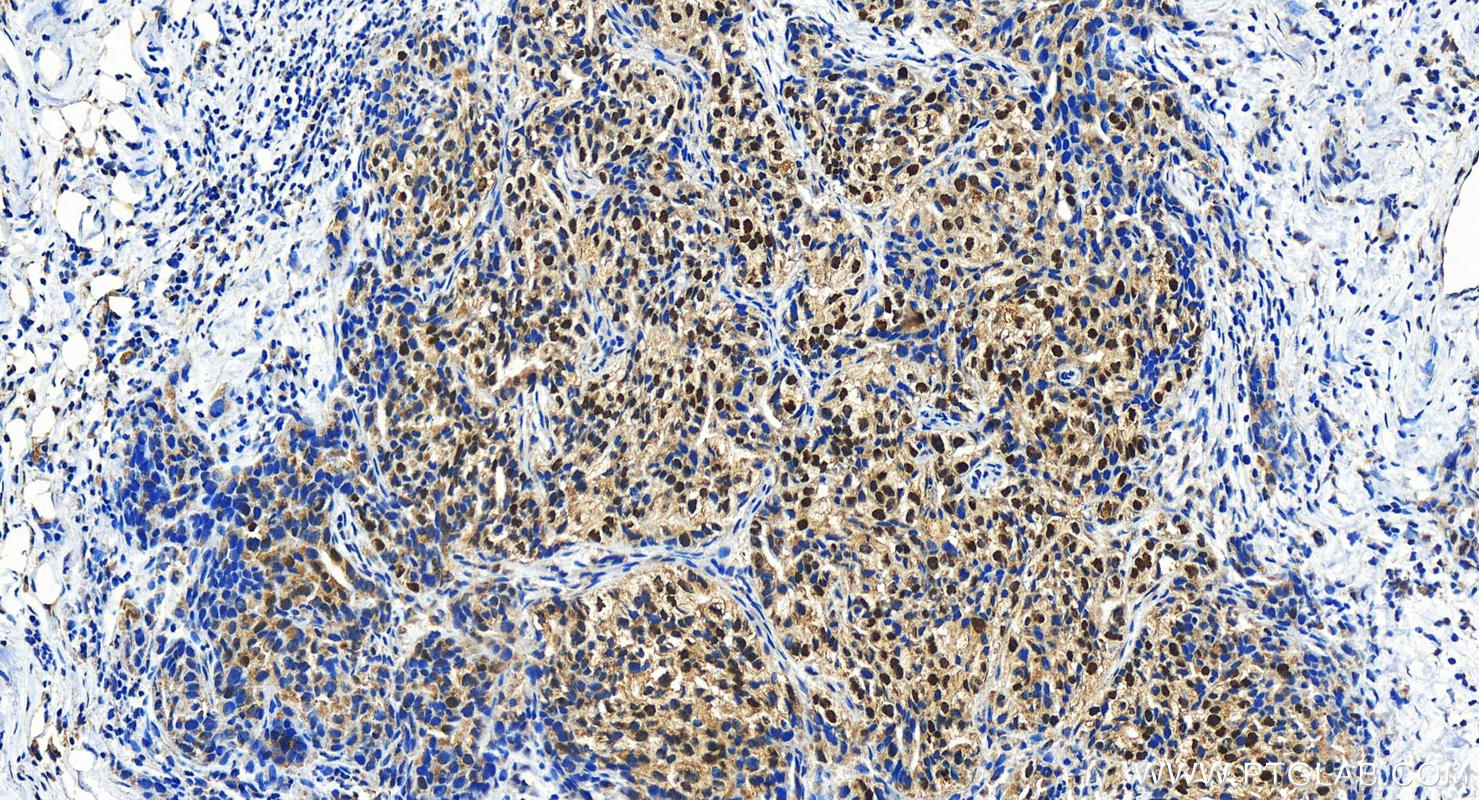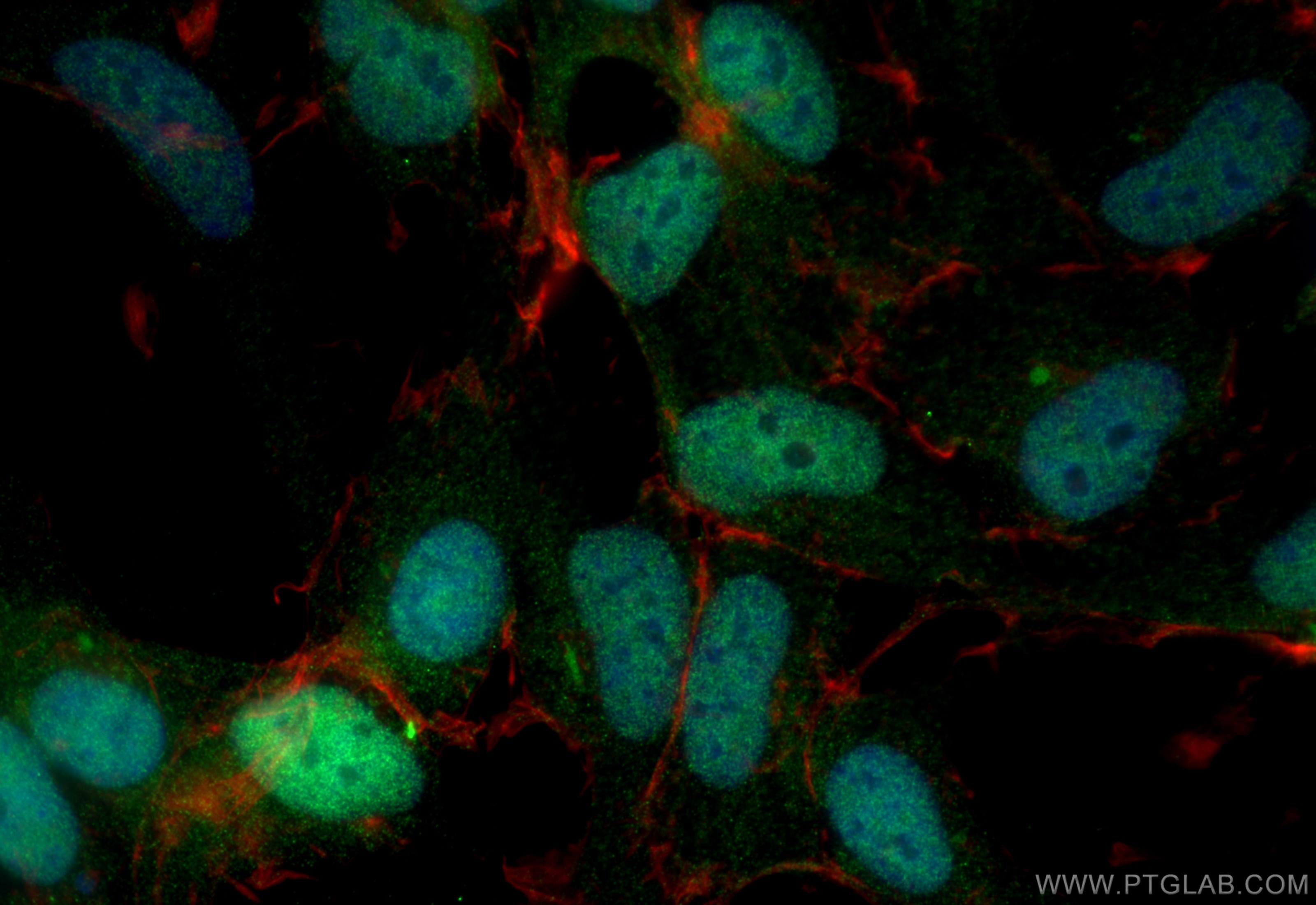SIX4 Polyklonaler Antikörper
SIX4 Polyklonal Antikörper für WB, IHC, IF/ICC, ELISA
Wirt / Isotyp
Kaninchen / IgG
Getestete Reaktivität
human, Maus, Ratte
Anwendung
WB, IHC, IF/ICC, ELISA
Konjugation
Unkonjugiert
Kat-Nr. : 21305-1-AP
Synonyme
Geprüfte Anwendungen
| Erfolgreiche Detektion in WB | HEK-293T-Zellen, HeLa-Zellen |
| Erfolgreiche Detektion in IHC | humanes Zervixkarzinomgewebe, Mauszungengewebe Hinweis: Antigendemaskierung mit TE-Puffer pH 9,0 empfohlen. (*) Wahlweise kann die Antigendemaskierung auch mit Citratpuffer pH 6,0 erfolgen. |
| Erfolgreiche Detektion in IF/ICC | HEK-293-Zellen |
Empfohlene Verdünnung
| Anwendung | Verdünnung |
|---|---|
| Western Blot (WB) | WB : 1:1000-1:4000 |
| Immunhistochemie (IHC) | IHC : 1:250-1:1000 |
| Immunfluoreszenz (IF)/ICC | IF/ICC : 1:200-1:800 |
| It is recommended that this reagent should be titrated in each testing system to obtain optimal results. | |
| Sample-dependent, check data in validation data gallery | |
Veröffentlichte Anwendungen
| KD/KO | See 1 publications below |
| WB | See 4 publications below |
| IHC | See 1 publications below |
| IF | See 2 publications below |
Produktinformation
21305-1-AP bindet in WB, IHC, IF/ICC, ELISA SIX4 und zeigt Reaktivität mit human, Maus, Ratten
| Getestete Reaktivität | human, Maus, Ratte |
| In Publikationen genannte Reaktivität | human, Maus |
| Wirt / Isotyp | Kaninchen / IgG |
| Klonalität | Polyklonal |
| Typ | Antikörper |
| Immunogen | SIX4 fusion protein Ag15918 |
| Vollständiger Name | SIX homeobox 4 |
| Berechnetes Molekulargewicht | 781 aa, 83 kDa |
| Beobachtetes Molekulargewicht | 98 kDa |
| GenBank-Zugangsnummer | BC098282 |
| Gene symbol | SIX4 |
| Gene ID (NCBI) | 51804 |
| Konjugation | Unkonjugiert |
| Form | Liquid |
| Reinigungsmethode | Antigen-Affinitätsreinigung |
| Lagerungspuffer | PBS with 0.02% sodium azide and 50% glycerol |
| Lagerungsbedingungen | Bei -20°C lagern. Nach dem Versand ein Jahr lang stabil Aliquotieren ist bei -20oC Lagerung nicht notwendig. 20ul Größen enthalten 0,1% BSA. |
Hintergrundinformationen
The Six (sine oculis) proteins are a family of homeodomain transcription factors that share a conserved DNA-binding domain and are human homologs of the Drosophila sine oculis (so) protein. SIX homeobox 4 (SIX4), also known as AREC3, belongs to the the Six family. Six4 contains one Six domain (which funtions as a homeobox DNA-binding motif) and shares 90% sequence similarity with its mouse counterpart, suggesting that both proteins have similar DNA-binding properties. SIX4 is thought to be involved in neurogenesis, myogenesis, and development of other organs, based on its specific expression in certain neuronal cells of the developing embryo and in adult skeletal muscles.
Protokolle
| PRODUKTSPEZIFISCHE PROTOKOLLE | |
|---|---|
| WB protocol for SIX4 antibody 21305-1-AP | Protokoll herunterladen |
| IHC protocol for SIX4 antibody 21305-1-AP | Protokoll herunterladenl |
| IF protocol for SIX4 antibody 21305-1-AP | Protokoll herunterladen |
| STANDARD-PROTOKOLLE | |
|---|---|
| Klicken Sie hier, um unsere Standardprotokolle anzuzeigen |
Publikationen
| Species | Application | Title |
|---|---|---|
EMBO Rep LncRNA GUARDIN suppresses cellular senescence through a LRP130-PGC1α-FOXO4-p21-dependent signaling axis. | ||
iScience RBFOX2 regulated EYA3 isoforms partner with SIX4 or ZBTB1 to control transcription during myogenesis | ||
Dev Biol A cellular and molecular mosaic establishes growth and differentiation states for cranial sensory neurons. | ||
Int J Biol Sci SIX4 Activation in Inflammatory Response Drives the Transformation of Colorectal Epithelium into Inflammation and Tumor via Feedback-Enhancing Inflammatory Signaling to Induce Tumor Stemness Signaling
| ||
Sci Rep SIX1 aggravates the progression of spinal cord injury in mice by promoting M1 polarization of microglia |
